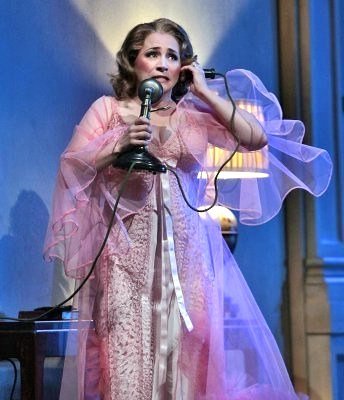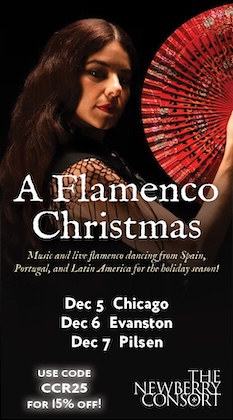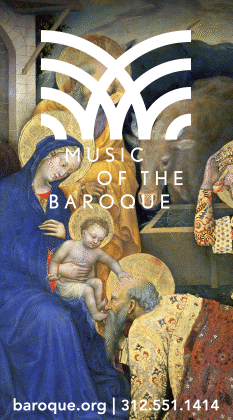Santa Fe Opera shoots and scores with stylish opera noir “The Letter”

SANTA FE: When a composer opens an opera with screams and six loud gunshots, it’s fair to say he’s grabbed the attention of his audience.
Fortunately, Paul Moravec’s The Letter, which is having its world premiere performances this summer at Santa Fe Opera, has more to offer than gunplay and lurid effects. And, while it may not be the most profound or subtle opera one is ever likely to encounter, The Letter is a stylish, musically compelling and tightly woven work that may singlehandedly create a new genre—opera noir.
Adapted from W. Somerset Maugham’s short story, which was made into a successful play and popular Bette Davis movie, the opera is based upon a real-life fatal love triangle. In British Malaya in the 1930s, Leslie Crosbie has just murdered Geoff Hammond, who she claims tried to rape her, and who, we soon learn, was her lover. Though clearly guilty she is supported by her stupefyingly credulous husband Robert, and represented by their attorney Howard Joyce. After her arrest, as Leslie is imprisoned and awaits trial, dark revelations arise, including Joyce’s discovery of Geoff’s Chinese mistress and her possession of the title missive that would prove incriminating to Leslie’s case.
Composer Paul Moravec and librettist Terry Teachout say that their creative alliance in The Letter was an unusually close and conflict-free partnership, which is evident in the smooth fit between Teachout’s text and Moravec’s music. Spare and aptly understated for such a melodramatic tale, Teachout’s words are so lean and laconic, at times the dialogue produced nervous laughter from the audience Monday night.
The Letter is cinematic in its straightforward fast-moving style, with no lulls and little intentional irony apart from the depiction of the British colonials’ casual racism in an artful ensemble scene at the expat men’s club.
Yet it is Moravec’s restless, undulating music that is the opera’s most successful element, propelling the action forward for ninety unbroken minutes. In his debut opera, the Pulitzer Prize-winning composer displays the same distinctive brand of melodic, engaging, skilfully varied music that characterizes his orchestral and chamber works. The constantly whirling strings and complex counterpoint ratchet up the tension to a nerve-wracking pitch in the flashback confrontation scene between Leslie and Geoff, and the steady inexorable crescendo of orchestra and multiple vocal lines in the courtroom scene also showcases Moravec’s remarkable technical facility.
In fact, so clever and resourceful is Moravec’s orchestral writing that one is repeatedly mesmerized by what is happening among the musicians in the pit, and less engaged by the more conventional vocal writing for the singers on stage.
Moravec distributes his music generously among the cast with a soaring flashback duet for Leslie and Geoff and each major character getting at least one solo aria in which they reveal, rather didactically, their inner thoughts and conflicts. Geoff’s ghostly apparition as the jury foreman to the guilt-stricken Leslie is a decidedly corny device and the closing scene loses some of the opera’s formal concentration with a melodramatic finale. Also Leslie’s final aria of self-recrimination comes off as a belated, not-quite-successful attempt to make the icy femme fatale a more sympathetic figure.
Overall, however, for all its calculation, The Letter is a taut, compelling and entertaining new opera, which is likely to find success and future performances.
Company regular Patricia Racette was well cast as Leslie, looking every inch the leggy man-killer in Tom Ford’s period costumes. Racette’s soprano has a strident edge on top but she handled the several high-flying passages Moravec has provided her smoothly and brought unnerving dramatic intensity to her confrontation scene with Geoff.
Anthony Michaels-Moore, last year’s Falstaff in Santa Fe, was suitably tortured as the cuckolded Robert, his harried, deer-in-the-headlights helplessness nicely etched. Vocally, however, the Englishman seemed miscast, his massive, dry-toned baritone far too imposing an instrument for Leslie’s weak husband.
As Geoff Hammond, Roger Honeywell had the looks and caddish swagger to make one believe that Leslie would be driven to distraction by the three-timing cad, his lyric tenor blending gracefully with Racette in their duet.
James Maddalena—looking startlingly even more like the 37th president than when he took the lead role in John Adams’ Nixon in China 22 years ago— captured the attorney Joyce’s conflicted loyalties well as the friend of Robert who must betray his principles to obtain the evidence that will save the guilty Leslie. Maddalena still possesses an ample resonant baritone and made the most of his soul-searching aria.
Rodell Rosel was aptly odious as the double-dealing clerk Ong Chi Seng. As Geoff’s nameless Chinese mistress, Mika Shigematsu was a light-voiced and wobbly presence. Keith Jameson, a memorable Novice in Billy Budd last summer, proved efficiently corrupt as John Withers, the colonial official.
Hildegard Bechtler’s set designs atmospherically set the milieu’s humid tropical languor with slowly rotating ceiling fans and ghostly billowing curtains. Jonathan Kent provided a model of naturalistic, unobtrusive stage direction, and Patrick Summers led a refined, richly textured account that allowed all the felicities of Moravec’s music to register with maximum impact.
The Letter runs through August 18. www.santafeopera.org; 505-986-5900, 800-280-4654.
Posted in Performances




